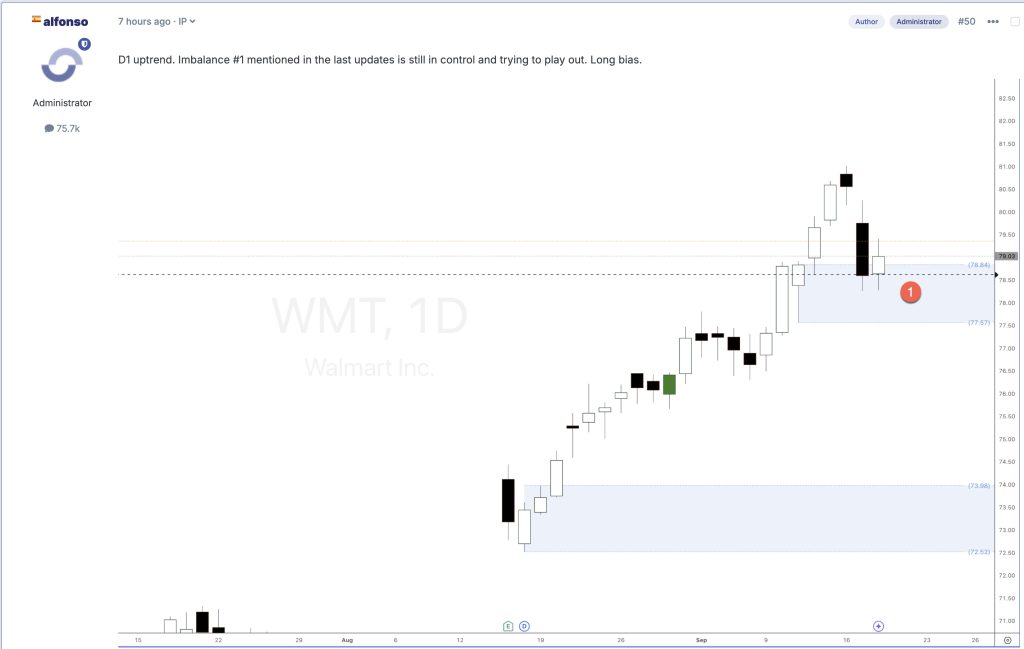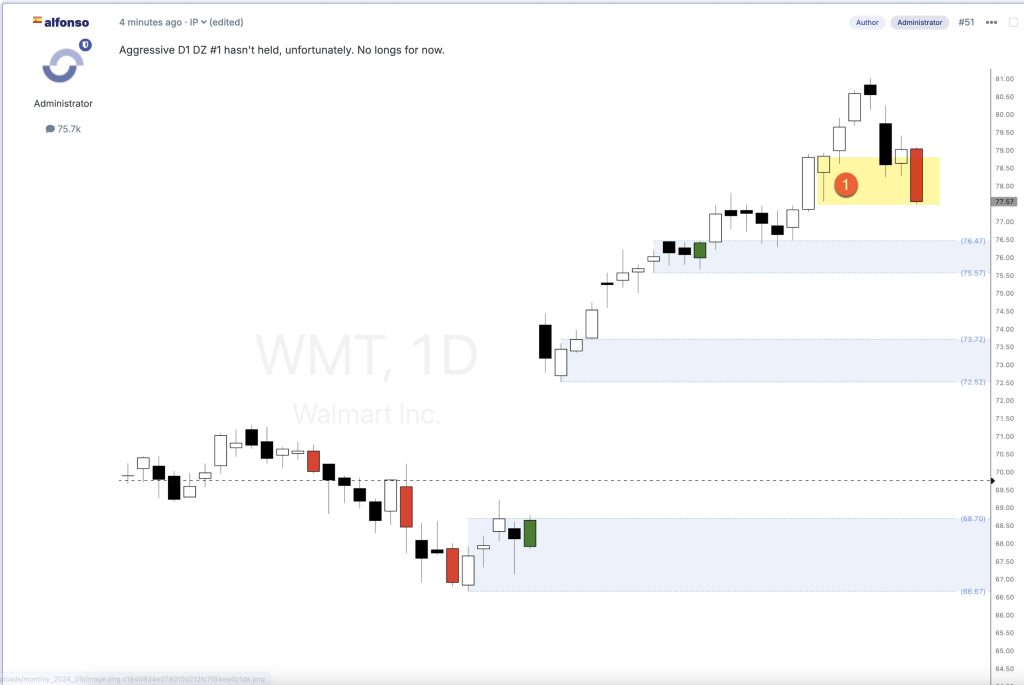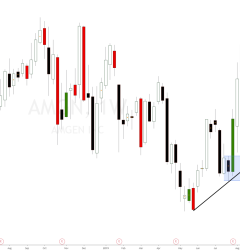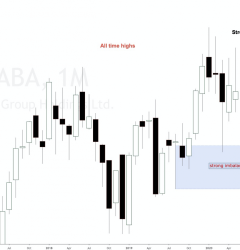19 Sep

Welcome to the future of retail! As we last quarter of 2024, all eyes are on Walmart—a titan in the world of commerce that’s surviving and thriving in an ever-evolving landscape. With innovations that blend technology and customer experience, Walmart is redefining what it means to be a leader in the retail space. This supply and demand stock analysis will explain the reasons behind the rally. From its strategic shifts toward e-commerce dominance to sustainable practices that resonate with today’s conscious consumers, discover how Walmart’s winning strategy sets it up for unprecedented growth.
Introduction to Walmart’s success in the retail industry
Walmart has long been a cornerstone of the retail industry, transforming how we shop and redefining customer expectations. With its sprawling network of stores and an ever-expanding online presence, this retail giant is not just surviving; it’s thriving in a fiercely competitive market. As consumers increasingly shift towards convenience and value, Walmart stands ready to capitalize on these trends.
As we look toward 2025, many investors are keenly eyeing opportunities that promise growth and stability. So why should Walmart be at the top of your list? Let’s dive into what makes this company tick and explore why now might be the perfect time to invest in its future success.
Reasons to Buy Walmart Stock $WMT
After breaking an all-time high, Walmart Inc. has reached a daily demand level of $78; regardless of what fundamental analysis and news releases for the giant, we expect a decent reaction to this demand imbalance. The daily imbalance was spotted a few days ago and shared in Set and Forget’s trading academy. See Walmart’s stock analysis in the screenshot below.
2024 has been an excellent year for Walmart. Its stock price value has increased by 37% since January 2024.

Unfortunately, the imbalance didn’t play out, and it was eliminated, as shown in the stock screenshot below. Sometimes, these imbalances don’t play out. No single stock trading strategy provides you with a 100% win/loss ratio. The stock could reverse from here. It’s common to see an imbalance overshot and then see a reversal. That’s why we must add a 25% stop loss padding below the imbalance. The trade should still be alive.

Overview of Walmart’s financial performance in recent years
Walmart has shown remarkable resilience in its financial performance over recent years. The retail giant consistently reports growth amid a rapidly changing market landscape.
In the last fiscal year, Walmart achieved record revenues, surpassing $600 billion for the first time. This milestone highlights their ability to adapt and thrive during challenging times.
Profit margins have also seen steady improvement. Strategic cost management and an emphasis on efficiency have significantly boosted overall profitability. Earnings per share (EPS) also continue rising, reflecting operational solid execution. Investors appreciate this upward trend and view it as a sign of stability.
Moreover, despite economic uncertainties, Walmart’s stock has remained relatively robust compared to that of its competitors. Their diversified portfolio ensures they can weather fluctuations while capitalizing on emerging trends in retail.
Analysis of Walmart’s competitive advantage and market dominance
Walmart’s competitive advantage lies in its unmatched scale and efficiency. With thousands of stores worldwide, it enjoys significant bargaining power over suppliers. This leverage allows Walmart to offer lower prices than many competitors.
The retailer also excels in logistics and supply chain management. Its sophisticated inventory systems ensure products are always available while minimizing costs. This operational prowess sets Walmart apart from others in the retail space.
Additionally, brand recognition plays a crucial role in its dominance. Shoppers trust Walmart for consistent quality and value, fostering loyalty that is hard for rivals to break.
Walmart’s investment in technology further enhances its edge. Innovations like automated fulfilment centres streamline operations and improve customer experience, ensuring that it stays ahead of emerging trends within the industry.
These factors create an environment where competitors struggle to keep pace with Walmart’s remarkable growth trajectory.
Walmart stands tall amid fierce competition from retail giants like Target and Amazon.
Each company has its strengths, but Walmart’s vast network of brick-and-mortar stores gives it a unique edge.
Target appeals to consumers with its curated shopping experience and trendy merchandise. However, it lacks the same scale as Walmart. This limits Target’s ability to compete on price consistently.
Amazon dominates e-commerce with unmatched convenience and fast delivery options. Yet, it’s still grappling with profitability in some sectors while investing heavily in logistics.
Walmart bridges both worlds effectively. With a substantial online presence and physical locations, they offer seamless omnichannel shopping experiences catering to diverse consumer needs.
This multifaceted approach positions Walmart effectively against competitors who focus primarily on one area or another. The ongoing evolution of the retail landscape further highlights this dynamic competition among industry leaders. Comparison to other major retail giants (Target, Amazon, etc.)









